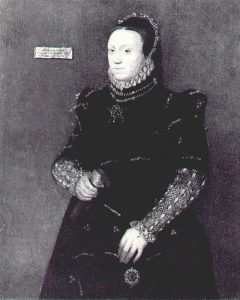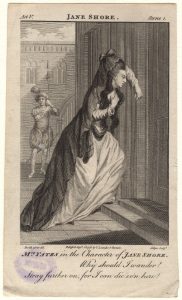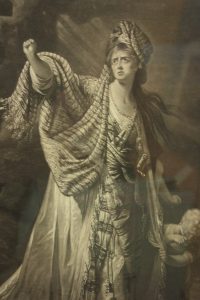I have been a student at Bristol since 2014, starting as an M(Phil) and becoming a PhD candidate in 2018. Yes, you might have guessed, I am a part-time student and I have been working alongside this journey as a professional scenic artist and teacher. My research is multi-disciplinary and I straddle two departments within the University: Theatre and Art History. Over the years I have learnt a lot, and there are many subjects I could write about here! For the purpose of this blog, I will focus on my recent experience of sharing ideas by presenting at an academic conference.
Throughout my time at Bristol, I have given a few talks and have been to a few conferences. I found that attending conferences early on in my studies allowed me to understand the latest research developments. Also, I found conferences are great places to meet other researchers, exchange ideas or – if you feel a bit stuck in your writing cave – can just be a much-needed change of scene. At this point in my PhD study, I was after a conference where I could also present some of my research. At the end of last year, I saw a call for papers for a three-day conference with the title Victorian and Edwardian Theatre in Performance, to be held at the Tyne Theatre and Opera House in Newcastle the following September. The conference caught my interest because it would bring together a variety of people with backgrounds and interest in theatre, including historians, theatre architects, curators, theatre professionals, and conservators. To name but a few. To me, this rich tapestry of people creates varied conversations – which was important to me. At my next supervision I spoke this through with my supervisor and she thought it was an excellent idea. She also suggested that I should keep the proposal open, yet closely aligned with the material I had been working on for my thesis. In my case this conference took place on the last leg of my studies and was an opportunity to come out of my writing cave. So, I sent off my proposal – thinking I would have no chance!
You are On!
A few months passed and in February an email landed in my inbox from the conference assistant letting me know that my paper had been chosen for presentation – gosh that was exciting. A few days later I received the list of speakers and my heart filled with even more excitement, yet also with a little bit of dread. The list included the names of people I had been following for some time, including an expert from America who I had been trying to catch for the last four years and a scholar who I would love to be my PhD examiner. Well, I think I have painted the picture and you can see that attending THIS conference mattered to me. So rather than dreading it -I just flipped it and I kept telling myself that this is a lovely opportunity.
The Preparation
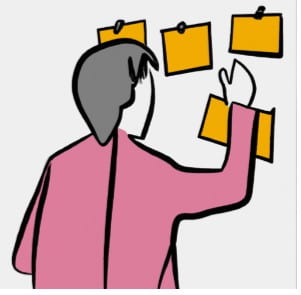 Preparation is very important to me- in my professional work as a scenic artist I might spent a considerable amount of time thinking, planning and testing. No one sees this, but it is there and helps with the running off (execution) of the project. This is the same with research, so starting early is key. I spoke my proposal through with my supervisor early on, as I find it hard doing things last minute. I love the ease that comes with experience, not mine but my supervisor’s. She knew exactly how many words would fit into twenty minutes. She also knew, when you present you need to slow down and leave some room as you may want to include some free speech, or insert responses that you may have picked up from other papers before yours. Unless of course your paper is right at the beginning, as then you have an opportunity to set the tone. The papers for this conference were twenty minutes long- that equals roughly 1,200 words in total, so by the time you split this into the sections, it becomes very manageable to structure and write. Hearing those words was very encouraging for me.
Preparation is very important to me- in my professional work as a scenic artist I might spent a considerable amount of time thinking, planning and testing. No one sees this, but it is there and helps with the running off (execution) of the project. This is the same with research, so starting early is key. I spoke my proposal through with my supervisor early on, as I find it hard doing things last minute. I love the ease that comes with experience, not mine but my supervisor’s. She knew exactly how many words would fit into twenty minutes. She also knew, when you present you need to slow down and leave some room as you may want to include some free speech, or insert responses that you may have picked up from other papers before yours. Unless of course your paper is right at the beginning, as then you have an opportunity to set the tone. The papers for this conference were twenty minutes long- that equals roughly 1,200 words in total, so by the time you split this into the sections, it becomes very manageable to structure and write. Hearing those words was very encouraging for me.
A few months passed, and around June I actually started on the paper. I had my abstract and some visual images that I wanted to include. Visual images are very important to me, so I went between planning the structure and selecting images that I wanted to include. Together these allowed my paper to evolve. I knew that I would want to limit myself to no more than 20 slides max. with maybe very small amounts of text on them. Here I can highly recommend the sessions the Bristol Doctoral College offers, which deal with presentation skills. These sessions can be very helpful, and I would always walk away with one or two good tips from each training session. For me, this is time well spent. On top of that, you are likely to meet like-minded people who can offer some support.
The other bit of preparation that I felt was helpful, was to see how my paper would fit in with the rest of the panel. So I contacted the Research Assistant of the conference to gather the other abstracts in my section. By doing that I wanted to see if how my talk could complement other contributions. The abstract I had submitted was fairly loose, with two main themes – networks and environments. After my first newspaper archive search – I felt I had enough material – to make a case for a local artist case study. I went through about seven paper drafts – and continued to work through the text and visual images at the same time. My key question was what do I want my audience to take away from this? In the end I landed at around 1800 words more than I wanted! But when I rehearsed it out loud it seemed to work out fine and it would take around 17 min. Reading out loud is a good technique as it allows you to hear/see more easily sections that aren’t as smooth or need more work. I repeated that process of reading out loud around a further 10 times.
The Conference
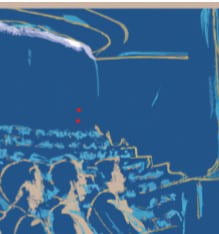 This is now the part that I referred to earlier on as running off or the execution stage- which means you have done the thinking, planning and testing- you are now running it off.
This is now the part that I referred to earlier on as running off or the execution stage- which means you have done the thinking, planning and testing- you are now running it off.
The day to travel to Newcastle came. I stopped on the way in Leeds for a few hours to see a theatre that had been on my list for a while. When I arrived in Newcastle I checked into the hotel and went for a walk. I had not been to Newcastle before and because my paper covered some of the local places within the city I wanted to go and see them in person, rather than on Google maps! That evening I ran through my paper once more and then left it mostly alone apart from the odd note referring to other papers: my paper was on the last day so I wanted to respond to some ideas that had emerged alongside what I was talking about.
The great thing about a conference lasting a few days is that you can really spend some time with the other speakers. I was particularly looking forward to a continuous dialogue with the American scholar who I have been wanting to meet for a long time. Equally, I had to make sure not to be too overbearing, as other people are busy and surely have (other) people they want to catch up with too.
Afterwards
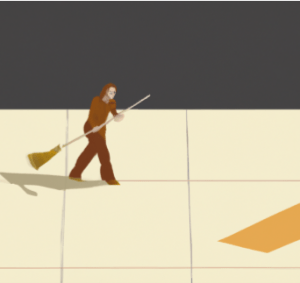 The sweeping up after the conference is also an important part and might get forgotten about as you have done it and are now off to new adventures! I made sure that I allowed for some time afterwards and didn’t plan anything too heavy in the days after the conference to give me time to reflect. Also, there is always a bit of admin and tidying up of notes, and there were a few people I wanted to follow up with as they had expertise in early silent film.
The sweeping up after the conference is also an important part and might get forgotten about as you have done it and are now off to new adventures! I made sure that I allowed for some time afterwards and didn’t plan anything too heavy in the days after the conference to give me time to reflect. Also, there is always a bit of admin and tidying up of notes, and there were a few people I wanted to follow up with as they had expertise in early silent film.
My big takeaways were:
- Try and present your research! In a small or big setting, it doesn’t matter. Saying things out loud and testing your ideas in front of others is not only a great way of getting feedback, but also it clarifies issues in your head.
- Stick to your time! This conference set a limit of twenty minute per paper, and this really made me think it through. What are the key points I want my audience to take away?
- The in person-dialogue with others. Yes you can have a dialogue via authors’ written work, which I’m not negating, but there is something about seeing and experiencing someone’s thinking and ideas out loud.
Last but not least keep enjoying the research journey!
https://bilt.online/immersive-histories-students-as-interdisciplinary-researchers/

